Suffering a stroke is a life-altering event that brings about significant physical, emotional, and financial challenges. Navigating the aftermath often involves understanding and securing the necessary social security and disability benefits to ensure a stable and supportive environment for recovery. This guide aims to provide stroke survivors and their caregivers with a clear, step-by-step process to apply for and manage these benefits.
Understanding Social Security Disability Insurance (SSDI) and Supplemental Security Income (SSI)
Social Security Disability Insurance (SSDI)
SSDI provides benefits to individuals who have worked and paid Social Security taxes. To qualify, you must:
- Have a medical condition that meets the Social Security Administration’s (SSA) definition of disability.
- Have sufficient work credits, typically requiring five out of the last ten years of employment.
Supplemental Security Income (SSI)
SSI offers benefits based on financial need rather than work history. It is available to individuals with limited income and resources who are disabled, blind, or aged 65 and older.
Step-by-Step Guide to Applying for Benefits
Step 1: Determine Eligibility
Before applying, ensure you meet the eligibility criteria for either SSDI or SSI. Visit the SSA’s Benefits Eligibility Screening Tool for a preliminary assessment.
Step 2: Gather Necessary Documentation
Collect the following documents:
- Personal identification (e.g., birth certificate, Social Security card).
- Medical evidence (e.g., hospital records, physician reports, and test results) demonstrating the severity of your stroke and its impact on your ability to work.
- Work history and earnings records for SSDI applicants.
- Financial records for SSI applicants.
Step 3: Complete the Application
You can apply for benefits online via the SSA’s website or by scheduling an appointment at your local SSA office. During the application process, you will need to provide detailed information about your medical condition, treatment, and how your stroke has affected your daily activities and ability to work.
Step 4: Wait for the Decision
The SSA will review your application, which can take several months. They may request additional information or schedule a consultative examination. Stay in touch with your healthcare providers to ensure timely submission of any requested documentation.
Step 5: Appeal if Necessary
If your application is denied, don’t be discouraged. Many initial applications are rejected. You have the right to appeal within 60 days of receiving the denial notice. The appeals process includes several levels: reconsideration, hearing by an administrative law judge, review by the Appeals Council, and federal court review.
Managing Benefits Post-Approval
Understanding Your Benefits
Once approved, familiarize yourself with the details of your benefits, including the amount, payment schedule, and any reporting requirements. For SSDI recipients, be aware that benefits may convert to retirement benefits once you reach retirement age.
Reporting Changes
Notify the SSA of any changes in your medical condition, employment status, or living situation. Failure to report changes promptly can result in overpayments that you may need to repay.
Medical Reviews
The SSA periodically reviews disability cases to determine ongoing eligibility. Stay prepared by keeping your medical records updated and attending all scheduled medical examinations.
Exploring Additional Support
In addition to SSDI and SSI, explore other support programs:
- Medicare: Available to SSDI recipients after two years of receiving benefits.
- Medicaid: Available to SSI recipients and provides comprehensive healthcare coverage.
- State and Local Programs: Various programs may offer additional financial assistance, transportation services, and vocational rehabilitation.
Support for Caregivers
Caregivers play a vital role in the recovery and well-being of stroke survivors. Here are some resources to support caregivers:
- Respite Care: Temporary relief for caregivers through programs like the National Respite Network.
- Caregiver Support Groups: Connect with others who understand your experiences.
- Financial Assistance: Explore tax credits and deductions for caregiving expenses.
Navigating social security and disability benefits post-stroke can be overwhelming, but understanding the process and knowing where to seek help can make a significant difference. By following this guide, stroke survivors and their caregivers can access the necessary resources to support recovery and maintain financial stability. Remember, persistence is key—don’t hesitate to seek assistance from professionals and support organizations along the way.





